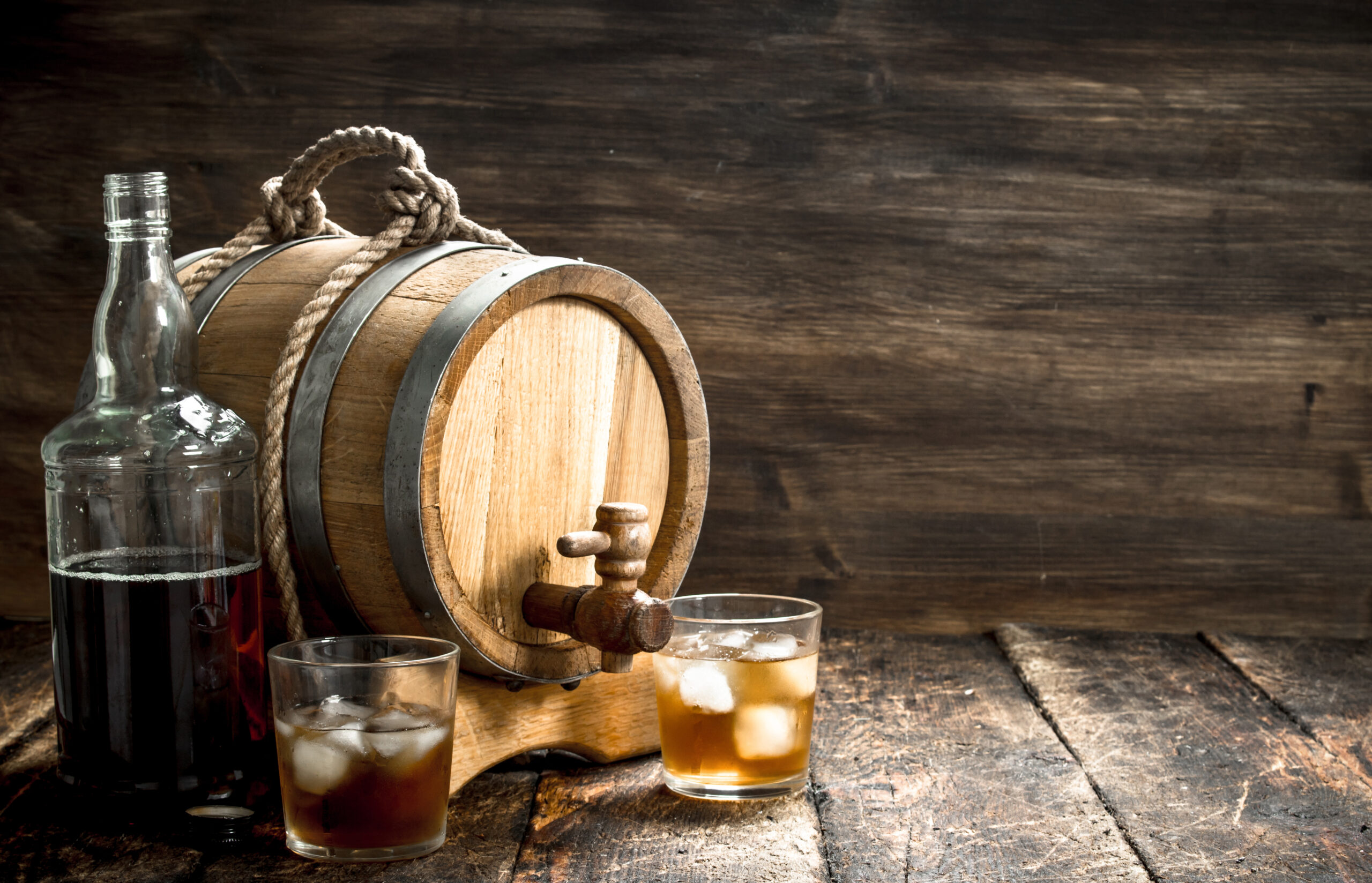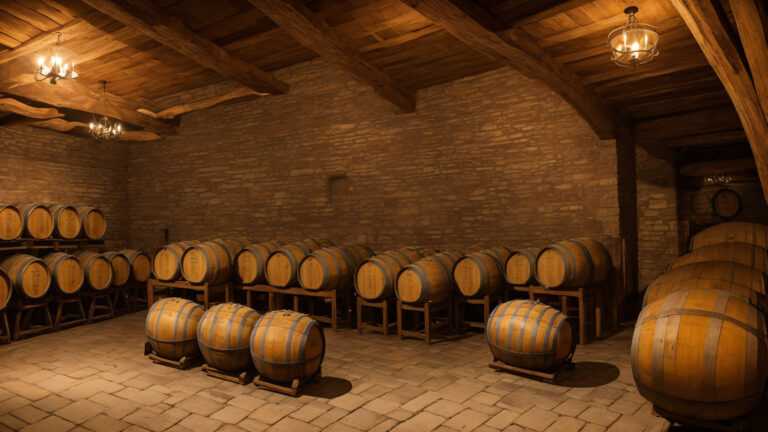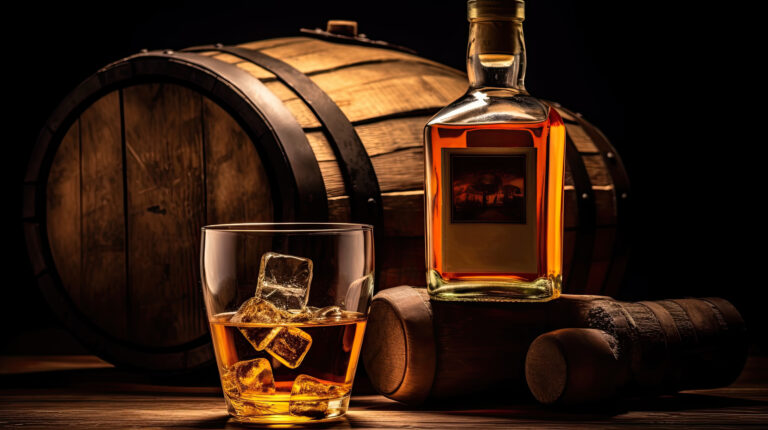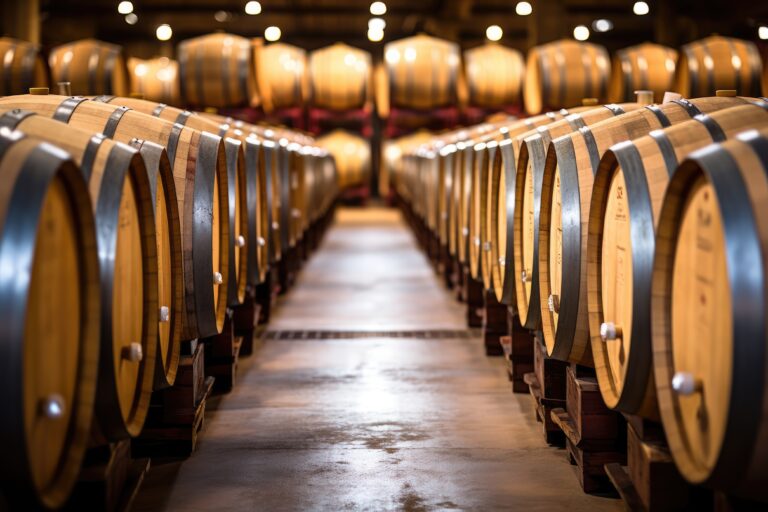So, you’ve decided to become a whiskey connoisseur and age your own spirits at home. Great idea! Aging whiskey in small barrels is a fun hobby and allows you to create a custom blend that suits your tastes. The question is, how long do you need to age the whiskey to develop the flavor you’re after?
Aging whiskey in a mini barrel is faster than using a standard full-size barrel. The smaller the barrel, the more contact the whiskey has with the wood. This means it picks up the barrel flavors like vanilla, caramel, and oak much quicker. For most mini barrels that hold 1 to 5 liters, the aging time can be just 2 to 12 weeks to get started. Give your whiskey a taste test every week or so to determine when it reaches your preferred flavor.
The aging time depends on a few factors, including the type of barrel wood, barrel size, type of whiskey, and of course your own tastes. The good news is, with small barrels, you can experiment to find what you like without waiting years for the final product. Your custom-aged, artisanal whiskey is just a few weeks away!
What Is a Mini Whiskey Barrel?
A mini whiskey barrel is a small oak barrel, typically holding 1 to 5 liters, used for aging whiskey or other spirits. These barrels allow you to age whiskey at home in a short amount of time.
The small size of mini barrels means the whiskey has more surface contact with the wood, allowing it to pick up oak flavors faster. You can have an aged whiskey in just a few months instead of years. The downside is that mini barrels can over-oak the whiskey quickly if left too long.
When you get your barrel, rinse it with water to remove any charcoal dust. Then fill it about 2/3 full with your unaged whiskey and let it sit in a cool, dark place. Taste it regularly after a month to monitor how the oak is influencing the flavor. Once it reaches your desired taste, bottle and enjoy your creation! You can then reuse the barrel a few times to age more whiskey.
With some patience and experimenting, you’ll be sipping your own custom-aged whiskey from a mini barrel in no time. The ability to control the aging process at home opens up a whole new world of DIY whiskey possibilities. Who knew such big flavor could come in such a small package?
Benefits of Aging Whiskey in Small Barrels
Aging whiskey in small barrels allows for faster maturation and enhanced flavor.
Accelerated Aging
Smaller barrels mean more surface area exposed to air, which speeds up oxidation and evaporation. This accelerated aging process results in a whiskey that’s ready to bottle in just a few months rather than years. For the impatient whiskey connoisseur, a mini barrel is a great option.
Intensified Flavor
The smaller volume of whiskey in a mini barrel and increased wood contact leads to bolder, more robust flavors. You’ll notice pronounced notes of vanilla, caramel and spice. The shorter aging time also allows the whiskey to retain more of its original grain flavor. Many distillers use small barrels specifically to create a uniquely flavored product.
Customizable Taste
Aging whiskey yourself gives you control over the final flavor profile. You can taste the whiskey regularly and bottle it once it reaches your desired characteristics. Whether you prefer lighter, fruity notes or deep, oaky tones, you can experiment with different wood types and aging periods to create a custom whiskey suited to your tastes.
While aging whiskey at home may require some patience, using a mini barrel will reward you with a flavored, tailored product in a fraction of the time. Your own artisanal whiskey – can you think of a better hobby?
How Mini Barrels Speed Up the Aging Process
The smaller size of mini barrels means the whiskey inside has more contact with the wood, so it absorbs flavors and color faster.
More Surface Area
Mini barrels have a higher surface area to volume ratio, so more of the whiskey is in contact with the wood. This allows it to absorb the oak flavors, aroma compounds and color from the charred wood faster.
After just 3-6 months, a whiskey aged in a mini barrel can develop flavors and color similar to a whiskey aged for years in a standard barrel. The smaller the barrel, the faster it will age the whiskey.
Of course, aging whiskey too quickly can result in a product that tastes harsh, woody or unbalanced. Master distillers carefully monitor mini barrels to avoid over-aging and pull the whiskey at just the right time to maximize flavor.
Some distilleries like to finish whiskey in mini barrels to add extra oakiness and spice notes. Others use a solera-style system, blending whiskies from mini barrels of different ages to create a complex yet balanced flavor profile.
When done right, mini barrel aging allows craft distilleries to bring aged and complex whiskeys to market faster, while still achieving exceptional quality and taste. But as with many things, moderation is key.
Typical Aging Times for Whiskey in Mini Barrels
Aging whiskey in mini barrels allows you to sample your creation much sooner. The smaller size means more surface area for the whiskey to interact with the wood, imparting color and flavor at an accelerated rate.
- 3 to 6 months: This will produce a young, vibrant whiskey with woody notes. The flavor and color will start to develop, but the whiskey will still be quite harsh.
- 6 to 12 months: The whiskey will mellow significantly during this time, developing a caramel-like sweetness and amber color. The wood flavors become more complex with hints of vanilla and spice.
- 1 to 2 years: A longer aging results in a whiskey with rich mahogany hues and a smooth, rounded flavor profile featuring toffee, dried fruit and toasted oak. The harshness has faded away, leaving a very pleasant sipping whiskey.
Be sure to sample your whiskey regularly to avoid over-oaking. The smaller barrel size means the aging process happens faster. Two years may produce an excellent, fully-matured whiskey, but going much beyond that risks an overpowering woody character.
Mini barrels are a fun way to explore home distilling and aging on a small scale. With some patience and experimentation, you’ll be sipping your own custom-aged whiskey in no time.
Factors That Affect Aging Time in a Mini Barrel
The smaller the barrel, the faster the aging process. Several factors affect how quickly whiskey ages in a mini barrel:
Barrel Size
Aging time is inversely proportional to barrel size. The less whiskey in the barrel, the more surface area exposed to the wood. This allows for faster flavor extraction from the wood, speeding up the aging process.
Barrel Char
A heavier char means more of the wood has been burned, creating more surface area to interact with the whiskey. The char exposes the whiskey to more wood compounds that impart flavor, color and aroma, accelerating the aging.
Barrel Wood
Barrels made of oak with tight grain and more tannins, like American white oak, tend to age whiskey faster than barrels with less tannins. The tannins and lignin in the wood break down to create complex flavors.
Climate
Warmer temperatures cause the whiskey to expand into the wood, then contract again when cooled. This movement pulls flavors from the wood. Consistent temperature fluctuations, as found in some warehouses, create an ideal climate for speeding up aging in a mini barrel.
Agitation
Rotating or turning the barrel frequently, especially in the first few months, increases the surface area of whiskey exposed to the wood. This agitation has an effect similar to that of smaller barrel size in accelerating aging.
In summary, smaller barrels, heavier char, oak wood, temperature changes, and frequent agitation will all contribute to faster aging times for whiskey in a mini barrel. With the right combination of these factors, a mini barrel can produce great flavor in just 3 to 12 months.
Tips for Getting the Best Results When Aging Whiskey
To get the best results from aging whiskey in a mini barrel, keep these tips in mind:
Select a Small Barrel
Choose a barrel that holds 1 to 5 liters. Smaller barrels mean more surface area, so the whiskey has more contact with the wood. This results in faster aging and more flavor in less time.
Use Fresh Barrels
New charred oak barrels impart the most flavor. Used barrels won’t produce the same flavors. Oak alternatives like staves and chips can be used with a neutral barrel to boost flavor.
Fill the Barrel Completely
Fill the barrel to the brim to minimize air exposure. As the whiskey ages, some will be lost to evaporation. Top off the barrel with more whiskey to keep it full.
Sample Frequently
Taste the whiskey regularly as it ages to monitor how the flavor develops. Once it reaches your desired taste, bottle it. The aging process moves quickly in small barrels, so frequent checking is important.
Consider Adding Wood
For extra oak flavor in a short time, add oak cubes, chips or staves to the barrel. Start with a small amount and increase over time based on flavor.
Bottle in Stages
Instead of bottling all the whiskey at once, bottle in stages from 3 months to 1 year. This provides a range of flavors to compare and allows you to bottle at your preferred taste.
Be Patient
Though aging happens faster in small barrels, it still requires patience. For the best flavor, most whiskeys need at least 6-12 months. Sample frequently, but avoid bottling before the 3-month mark.
Your mini barrel aged whiskey will be ready when it has a balance of wood flavors like vanilla, caramel and spice that matches your tastes. With some experimenting, you’ll be making custom whiskey in no time!
How to Taste and Evaluate Whiskey From a Mini Barrel
When you’re ready to evaluate and taste the whiskey from your mini barrel, here are some tips to properly assess its flavor.
Gather Your Tools
You’ll need a few essential tools: a whiskey glass, spoon, eyedropper or pipette, and notebook. A glencairn glass is ideal for nosing and tasting whiskey. Use the spoon to add drops of water to your dram and open up the flavor. The eyedropper allows you to add water dropwise. And the notebook is for recording your observations and tasting notes.
Check the Color
Hold your glass up to the light and note the hue. A rich, amber color is a good sign, indicating time spent aging in the barrel. Lighter, straw-like shades may need more aging. Swirl the glass to see the “legs” that form—the streaks of liquid that run down the sides of the glass. Slower, thicker legs indicate a higher alcohol content.
Nose the Aroma
Swirl the glass again to release the aroma molecules. Inhale deeply through your nose to detect notes of vanilla, caramel, oak, fruit, or smoke. Adding a few drops of water can enhance and unlock new aromas. Record all the scents you detect in your notebook.
Taste and Evaluate
Take a small sip and let it roll over your tongue before swallowing. Pay attention to the evolving flavors of sweet, sour, bitter, and savory. How long does the finish last after swallowing? Complex, lingering finishes are a mark of a well-aged spirit. Add a few more drops of water with each sip to open up new flavor dimensions. Compare to other whiskies you’ve tasted.
The key is taking your time to thoroughly nose, taste, and evaluate the whiskey from your mini barrel. Record your impressions each step of the way. Comparing notes from the beginning of aging to the end will reveal how the spirit has transformed and improved over time. Happy tasting!
When Is Your Whiskey Ready for Bottling?
When aging whiskey in a mini barrel, it can be hard to know exactly when it’s ready to bottle. As a general rule of thumb, whiskey aged in small barrels can be ready in 3 to 12 months. The aging time depends on factors like:
- The type of whiskey (bourbon, rye, etc.)
- The size and char level of the barrel
- Personal taste preferences
To check if your whiskey is ready, do a tasting every 4 to 6 weeks after the first month. Look for these signs that it may be matured:
Color
The whiskey should take on a light amber to medium brown color. If it’s still very pale after 3-4 months, it likely needs more aging.
Aroma
You’ll notice the harsh alcohol smell mellowing and aromas of caramel, vanilla and wood coming through. The aroma should be pleasantly fragrant, not too sharp.
Flavor
Take a small sip and swirl it around your mouth. Mature whiskey will have developed flavors like toffee, spice and oak. It should taste smooth, not too bitter. If it still tastes raw or one-dimensional, keep aging.
Oakiness
As it ages, whiskey absorbs compounds from the oak barrel like vanillin that impart an oak flavor. Taste for flavors of wood, cigar box, or vanilla. The oakiness should be balanced, not overpowering.
Once your whiskey hits the right color, aroma, flavor and oakiness for your tastes, it’s ready to bottle and enjoy! The aging can continue in the bottle, but at a much slower rate. Your homemade aged whiskey is best enjoyed within 6-12 months after bottling for maximum flavor.
How Long Do You Age Whiskey in a Mini Barrel FAQs
Aging whiskey in a mini barrel allows you to customize the flavor to your tastes. The longer it ages, the more complex the flavors become. But how long is long enough? Here are some FAQs about aging time in a mini barrel.
How Long Does It Take to Age Whiskey in a Mini Barrel?
Aging time can vary from 3 months up to 2-3 years for a mini barrel. For most, 6-12 months produces good results. A lot depends on the size of your barrel, type of wood, and personal taste preferences.
- 3-6 months provides a noticeable oaky flavor and amber color.
- 6-12 months results in a balance of wood notes and the whiskey’s original flavor.
- 1-2 years produces a darker, smokier flavor with strong wood notes.
The key is tasting frequently so you can bottle when it reaches your ideal flavor.
Does Aging Time Differ for Different Types of Whiskey?
Yes, the aging requirements vary for different whiskeys. Bourbon ages faster than scotch due to the barrel charring. Rye whiskeys also age more quickly. The sweeter, heavier flavors of rum and brandy require less aging time. In the end, your palate is the best guide.
What Happens During the Aging Process?
As whiskey ages in the barrel, several chemical reactions occur:
- Evaporation reduces volume but concentrates flavors.
- Oxygenation alters and mellows the whiskey.
- Wood tannins impart oak flavors like vanilla, spice and smoke.
- The barrel’s charred layer filters and mellows the whiskey.
The aging process is a delicate balance of all these elements coming together to create a superb, complex spirit. Patience is rewarded!
Final Thoughts
So there you have it, everything you need to know about aging whiskey in a mini barrel. The aging process allows the whiskey to mellow and the flavors to develop in unique ways. While a full-sized barrel will produce an aged whiskey more quickly, a mini barrel lets you experiment and customize the aging to your tastes. Start with a shorter aging period, then taste frequently. Once it reaches a flavor you love, bottle and enjoy! Home aging whiskey is a fun and rewarding hobby. Now get yourself a barrel, source some whiskey, and start your own mini aging experiment. In just a few months, you’ll be tasting the fruits of your labor and enjoying an aged whiskey like no other.







